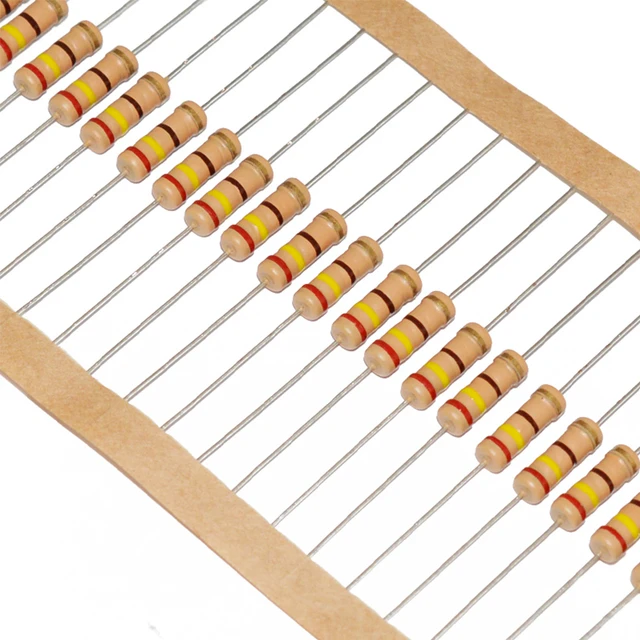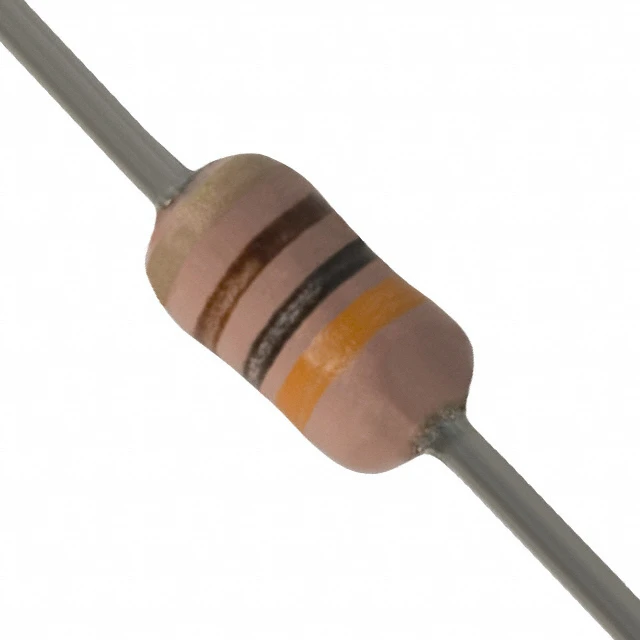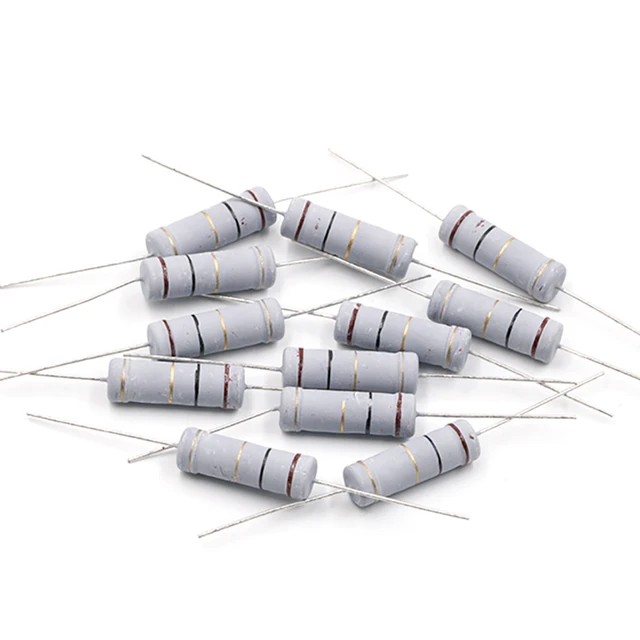 Introduction:
Introduction:
The wattage of a resistor is a crucial specification that determines its power handling capability. Choosing the correct wattage for a resistor is essential to ensure safe and reliable operation in electronic circuits. In this comprehensive guide, we will explore the definition, significance, factors affecting wattage, and practical considerations associated with resistor wattage. By understanding these aspects, you can confidently select and utilize resistors with the appropriate wattage for your electronic designs.
 Some common types of resistors:
Some common types of resistors:
There are several types of resistors used in electronic circuits. Here are some common types of resistors:
Carbon Composition Resistors:
These resistors are made from a mixture of carbon granules and a binder material. They are relatively inexpensive and can handle high power. However, they are less precise and may have higher tolerance values.
Metal Film Resistors:
Metal film resistors have a thin metal film layer deposited on a ceramic or glass substrate. They provide better stability, accuracy, and lower noise compared to carbon composition resistors. Metal film resistors are commonly used in applications that require high precision and low noise performance.
Wirewound Resistors:
Wirewound resistors consist of a wire wound around a ceramic or fiberglass core. They can handle high power and have low inductance. Wirewound resistors are commonly used in high-power applications such as power supplies, amplifiers, and motor control circuits.
Thick Film Resistors:
Thick film resistors are made by depositing a resistive paste on a ceramic or glass substrate and then firing it. They are cost-effective, offer good stability, and have a wide range of resistance values. Thick film resistors are commonly used in consumer electronics and low- to medium-power applications.
Thin Film Resistors:
Thin film resistors are similar to thick film resistors but have a thinner resistive layer. They provide high precision, excellent stability, and low temperature coefficient of resistance (TCR). Thin film resistors are commonly used in high-frequency applications, precision measurement equipment, and instrumentation.
These are just a few examples of the different resistor types available. Each type has its own characteristics, advantages, and applications. The choice of resistor type depends on factors such as the required tolerance, power rating, stability, cost, and the specific requirements of the electronic circuit or application.
 Definition and Significance of Resistor Wattage
Definition and Significance of Resistor Wattage
Definition:
The wattage of a resistor, measured in watts (W), indicates the maximum power the resistor can safely dissipate without overheating or damage.
The wattage specification represents the resistor’s power handling capability.
Significance:
Exceeding the wattage rating of a resistor can cause overheating, drift in resistance value, changes in electrical characteristics, or even physical damage.
Selecting a resistor with an appropriate wattage rating ensures reliable operation and prevents failure due to excessive power dissipation.
Factors Affecting Resistor Wattage
Resistance Value:
Resistors with higher resistance values and the same current passing through them generate more power (heat) than lower resistance values.
Higher resistance values may require higher wattage ratings to handle the heat dissipation.
Maximum Current:
The maximum current passing through the resistor affects its wattage rating.
Higher current levels require resistors with higher wattage ratings to handle the increased power dissipation.
Ambient Temperature:
The ambient temperature, or the temperature of the environment in which the resistor operates, affects its ability to dissipate heat.
Higher ambient temperatures reduce the resistor’s ability to dissipate heat, necessitating a higher wattage rating to compensate.
Practical Considerations for Resistor Wattage
Power Calculations:
Accurate power calculations are essential to determine the wattage rating required for a resistor in a given circuit.
Power dissipation is calculated using the formula: P = I^2 * R, where P is power (in watts), I is current (in amperes), and R is resistance (in ohms).
Derating:
Operating a resistor below its maximum wattage rating allows for margin or derating.
Derating ensures improved reliability and avoids the risk of overheating under diverse operating conditions.
Standard Wattage Ratings:
Resistors are available in standard wattage ratings, such as 1/4W, 1/2W, 1W, or higher, depending on the manufacturer.
Selecting a resistor with a wattage rating higher than the calculated power dissipation ensures safe operation under normal conditions.
Practical Applications and Common Resistor Wattages
Low-Power Applications:
Many electronic circuits operate in low-power environments, using resistors with wattage ratings of 1/8W, 1/4W, or 1/2W.
Resistors in these wattage ranges are commonly used in consumer electronics, signal conditioning, and low-voltage power supplies.
Medium-Power Applications:
Medium-power applications, such as audio amplifiers and power supplies, generally require resistors with wattage ratings between 1W and 5W.
These resistors can handle higher power dissipation while maintaining stable operation.
High-Power Applications:
High-power electronics, including industrial equipment and power electronics, often require resistors with wattage ratings of 10W or higher.
These resistors are designed to handle significant power dissipation and provide reliable performance in demanding environments.
 Steps to measure resistance using a multimeter:
Steps to measure resistance using a multimeter:
To measure resistance, you will need a multimeter capable of measuring resistance. Here are the steps to measure resistance using a multimeter:
Set the Multimeter:
Turn on the multimeter and set it to the resistance (ohms) mode. Make sure the range is appropriate for the resistance value you expect to measure. If you’re unsure about the resistance range, start with the highest range and gradually decrease it if needed.
Disconnect Power:
Ensure that the circuit or device containing the resistor is powered off or disconnected from its power source. This is necessary to avoid any electrical interference during the measurement.
Identify the Resistor:
Locate the resistor you want to measure. If needed, remove any connections from the resistor to prevent interference from other circuit components.
Connect the Multimeter Probes:
Connect the multimeter probes to the ends of the resistor. The red probe should be connected to the resistor’s positive terminal, and the black probe to the negative terminal. If the resistor is not polarized (such as an axial resistor without specific polarity markings), it doesn’t matter which probe is connected to which end.
Read the Measurement:
Once the connections are secure, the multimeter will display the measured resistance value. Read the value on the display. If the measurement is outside the selected range, adjust the multimeter range to a higher or lower value as necessary and measure again.
Interpret the Measurement:
Compare the measured resistance value with the expected or desired resistance. If there is a significant difference, it may indicate an issue with the resistor or the circuit.
Disconnect the Probes:
After obtaining the measurement, disconnect the multimeter probes from the resistor. If you removed any connections in Step 3, reconnect them according to the circuit or device requirements.
It’s important to note that when measuring resistance, it’s best to disconnect the resistor from the circuit to ensure accurate measurements. Additionally, ensure you are using the correct measurement setting and the probes make clean and secure contact with the resistor terminals to avoid inaccurate readings.
 Conclusion:
Conclusion:
Resistor wattage is a critical specification that determines a resistor’s ability to handle power dissipation. By understanding the definition, significance, factors affecting wattage, and practical considerations outlined in this comprehensive guide, engineers and enthusiasts can confidently select and utilize resistors with the appropriate wattage for their applications. Whether it’s a low-power, medium-power, or high-power application, selecting resistors with adequate wattage ratings ensures safe and reliable operation in electronic circuits. Let this guide serve as a valuable resource, enabling you to optimize the performance, reliability, and safety of your electronic designs by choosing the correct resistor wattage.










